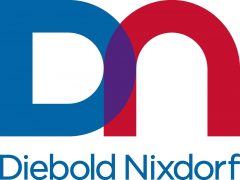Keep the change: how fintech is blurring the line between transaction and payment
Until relatively recently, taking a taxi meant checking your wallet for cash first and/or a trip to the ATM. Those days seem like ancient history.
Mobile apps are radically redefining how we pay for basic services. Now you can take a “taxi” without ever thinking about money – or even speaking to the driver; you reserve the car, specify the location, and make the payment as a seamless part of an in-app transaction.
Increasingly, we’re seeing the payment becoming implicit in transactions for all kinds of services. To be explicit – the payment is being made invisible; and it’s not just ride share services leading this trend: you can order pizza, pay for groceries, book a massage, and get a coffee without ever pulling out your cash or a credit card.
Currently, many payment methods require intermediaries such as card issuers, gateways and processors to complete the transaction. Vendors and service providers are focused on optimising the process to cut out intermediaries and be paid directly.
However, the natural next step is for vendors and service providers to find ways to cut out the intermediaries and be paid directly. More and more services are starting to offer their own payment schemes in an attempt to ease friction for customers, induce loyalty, lower costs, and generate additional revenue streams by finding ways to reduce or even completely disintermediate banks, processors, and card issuers.
Uber has even jumped into competing directly with banks and issuers venturing into what it calls “payment experiences”. Its first foray into financial products is erasing “pay day” and offering instant card-based payment with nominal credit lines to drivers and couriers; the company is also giving customers discounts for pre-funding an e-wallet and providing loyalty rewards. The service is even contemplating establishing its own bank to offer basic banking services to the 40% of its 100 million global monthly active users who are unbanked or underbanked.
Vendors and service providers will continue to seek out ways to optimise their transaction flow and customer experience and to save the costs associated with credit card payments; they will chip away bit by bit at the ubiquity of credit and debit cards in e-commerce transactions and compete head-to-head with banks on a range of products.
What does this trend mean for banks and credit card issuers?
This trend heralds the tipping point in the ongoing struggle for banks and issuers to remain relevant. The new business model being forced upon the traditional banking stalwarts is making them rethink everything from time-to-market to which emerging payment methods to accept.
As payments become more frictionless, the banking industry struggles with how to cultivate and maintain customer loyalty. Now consumers can choose from multiple payment alternatives (e.g. PayPal, Venmo, Alipay) even when their “bank” doesn’t offer it as a service.
How do banks maintain stickiness with the consumer when the institution’s brand is not even associated with the payment a consumer is making? Payment innovation is the thing that quite literally should be keeping leaders in traditional banking up at night.
Future-proofing payments
Diebold Nixdorf is committed to helping our customers face this disruption, which is why we developed VynamicTM Payments, the next-generation payments solution.
We didn’t want to just introduce a new payments platform; we wanted to empower our customers to meet their most pressing payments challenges and to prepare them for whatever comes next. We approached payments with a fresh perspective, directing our efforts on where innovation can make the biggest impacts and offer the greatest opportunities to help our customers face the future with confidence.
By Mike Gillpatrick, Senior Product Manager Payments, Diebold Nixdorf
To learn more about VynamicTM Payments visit DieboldNixdorf.com/Payments to see how you too can discover the future of payments now!













































